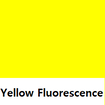|
Formula
Procedure of Application
Development Complete When
Source of Error
Incompatibilities
Precautions
Storage Container
Safety
Recommendations
Similar Reagent
Sequential Reagent
Formula
D.F.O. Stock Solution
D.F.O. Working Solution Add Petroleum ether to the stock solution until the total volume is two liters. IRCG Formulation
Procedure of Application
Development Complete When
Red-pink ridge detail is observed after applying the chemical and baking the item. Source of Error
High humidity or steam cannot interact with the item being processed. Completely dry the item prior to viewing. Incompatibilities
Items which cannot be subjected to baking in an oven at 100 degrees C for 20 minutes. Not suited for non-porous surfaces and items which have been wet. Precautions
Prepare the working solution and apply the reagent in a fume hood. Highly fluorescent papers, inks and paints may interfere with the fluorescence of the ridge detail. DFO treated porous items may become stained a yellow discoloration after some time. Storage Container
Dark stoppered plastic-coated bottles. Safety
Fume hood use is required for preparing the working solution and applying the reagent. Recommendations
Use prior to ninhydrin in the processing sequence. D.F.O. is considered more sensitive for amino acid detection than is ninhydrin. Similar Reagent
Sequential Reagent
Vertical Divider
|
Chemical Name
D.F.O. Surface Used On Dry Porous Documents Sensitive To Amino Acids and Eccrine Components Abridged Reagent Sequence
Vertical Divider
|
Ridge Detail Visualized by:
Forensic Light Source induced Reagent Applicabilities: Porous Surfaces Fluorescent Technique Raw Wood Surface Other Chemical Name(s): 1,8-Diazfluoren-9-one Working Solution Shelf-life: Six (6) plus months |
Process Summary:
A technique used prior to Ninhydrin that reacts to amino acids present in latent print residue on porous surfaces. DFO is regarded as capable of developing more ridge detail than Ninhydrin. A fluorescence of the prints is obtained after baking the item in an oven at 100 degrees C, then viewing under a forensic light source.
A technique used prior to Ninhydrin that reacts to amino acids present in latent print residue on porous surfaces. DFO is regarded as capable of developing more ridge detail than Ninhydrin. A fluorescence of the prints is obtained after baking the item in an oven at 100 degrees C, then viewing under a forensic light source.
Accepted Deviations:
A hair dryer or a DRY steam iron may be substituted for a baking oven, if necessary. Do not allow steam to contact the item. Strict control of the humidity is not required. Pentane (instead of Petroleum ether) can be used as the carrier solvent. View the item at 500 nm to 590 nm using red colored goggles to reduce background fluorescence, if necessary.
A hair dryer or a DRY steam iron may be substituted for a baking oven, if necessary. Do not allow steam to contact the item. Strict control of the humidity is not required. Pentane (instead of Petroleum ether) can be used as the carrier solvent. View the item at 500 nm to 590 nm using red colored goggles to reduce background fluorescence, if necessary.
Supporting Reference Materials:
- Minutiae Magazine, Summer Special 1994, Issue No. 24, pg.7.
- "Chemical Formulas and Processing Guide for Developing Latent Prints", U.S. Dept. of Justice, pg. 47-48, 1994.
- Advances in Fingeprint Technology 2nd. Ed., Lee, H.C. & Gaensslen, R.E., CRC Press, Boca Raton, FL., 2001.
- Manual of Fingerprint Development Techniques 2nd. Ed., Home Office - Police Scientific Development Branch, White Crescent Press, Ltd., Luton, England, 2001.
- Technical Notes, Lightning Powder Co. Inc., Salem, OR., 2001.
- Didierjean, C., Debart, M-H, Crispino, F., "New Formulation of DFO in HFE-7100", Fingerprint Whorld, Vol. 24, No. 94, October 1998, pp.163-167.






